After eight straight victories, including away to Tottenham Hotspur, Manchester United traveled back to London to meet Arsenal in the fourth round of the FA Cup. Ole Gunnar Solskjaer’s team faced an Arsenal side under former Sevilla manager Unai Emery who are ahead of them in the Premier League. The tie represented another test for Manchester United’s revival under their interim manager.
Our analysis will look at how Arsenal’s loss of Sokratis Papastathopoulos in the 21st minute changed the match, why Manchester United were able to attack so efficiently, and how Solskjaer uses Romelu Lukaku more effectively than Jose Mourinho did.
Lineup
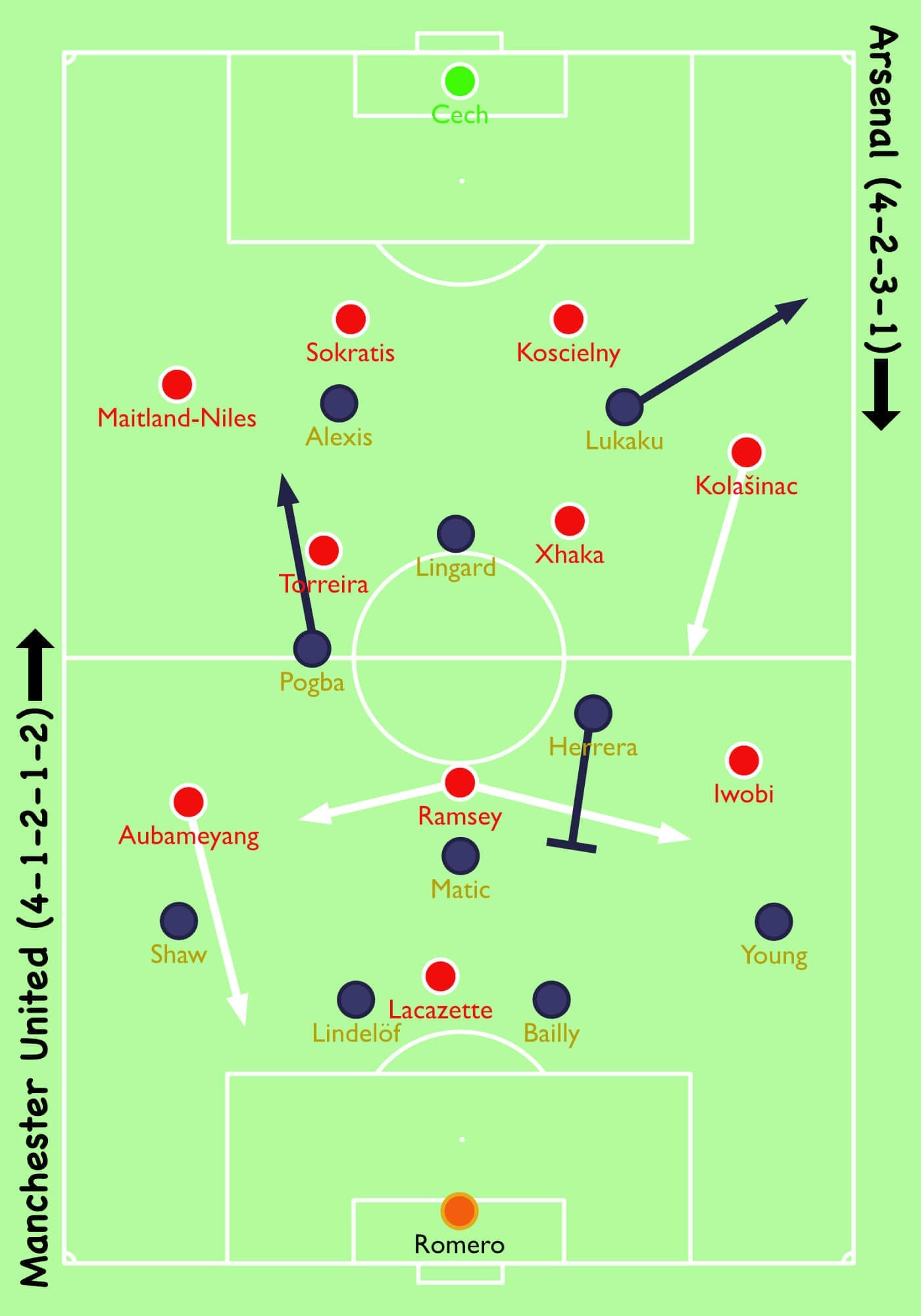
Manchester United made four changes from the side that beat Brighton & Hove Albion at home six days earlier. The most important of those changes were Marcus Rashford and Anthony Martial, both of whom have been in great form of late, starting on the bench. This allowed a chance for Romelu Lukaku and former Arsenal forward Alexis Sanchez to start, as they hope to force their way into Solskjaer’s match plans.
Unai Emery made only two changes from the side that dispatched Chelsea a week earlier, with Petr Cech getting the start as Bernd Leno dropped to the bench. His only other change was Ainsley Maitland-Niles filling in at right-back in place of Hector Bellerin, who suffered a season-ending knee injury in the game against the Blues.
Keys to the match
There are several trends which influenced how the match turned out, and we’ll look at how Manchester United’s attack took advantage of Arsenal’s flaws, what allowed Romelu Lukaku to have a man-of-the-match performance, and how each team changed in the second half.
Arsenal start strong before United find flaws
Unai Emery’s side started the game well. Playing a 4-2-3-1 formation allowed them to take the initiative in the opening phase of the match. The central midfield pairing of Granit Xhaka and Lucas Torreira operated well behind Aaron Ramsey’s free role as the side’s playmaker.
Manchester United played in a 4-4-2 diamond, as they did against Tottenham at Wembley Stadium. United’s formation meant without the ball they congested the space in the middle of the pitch, thereby restricting Arsenal’s ability to play through the middle. This frequently meant Arsenal needed to go wide to penetrate the final third, and Ramsey was an important component in crafting these chances.
The Welshman had a free role during the attacking phase, always moving into wide areas to help overload the Manchester United defence on the near side. Most of these attacks came down Arsenal’s left, as Alex Iwobi is a more of a natural winger than Pierre-Emerick Aubameyang on the right side. In addition, Sead Kolasinac played much higher up the pitch as the match progressed than Ainsley Maitland-Niles did on the right side.
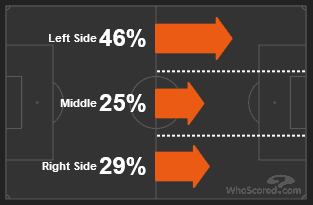
As the chart shows, almost half of Arsenal’s attacks came down their left side. Early in the match, they were unable to create chances. Kolasinac stayed back in the attack, so Ander Herrera was able to drift out wide with Ramsey to ensure that there were no overloads. As the first half went along, the Arsenal left-back started to play higher up the pitch, and this started to create the overloads they desired.
Below, in the lead up to Arsenal’s goal just before half-time, we see that Alex Iwobi stays close to the touchline, while Kolasinac goes on an underlapping run. Ramsey drifts outside on the ball side, making an out-to-in run to move into the channel between United’s full-backs and centre-backs.
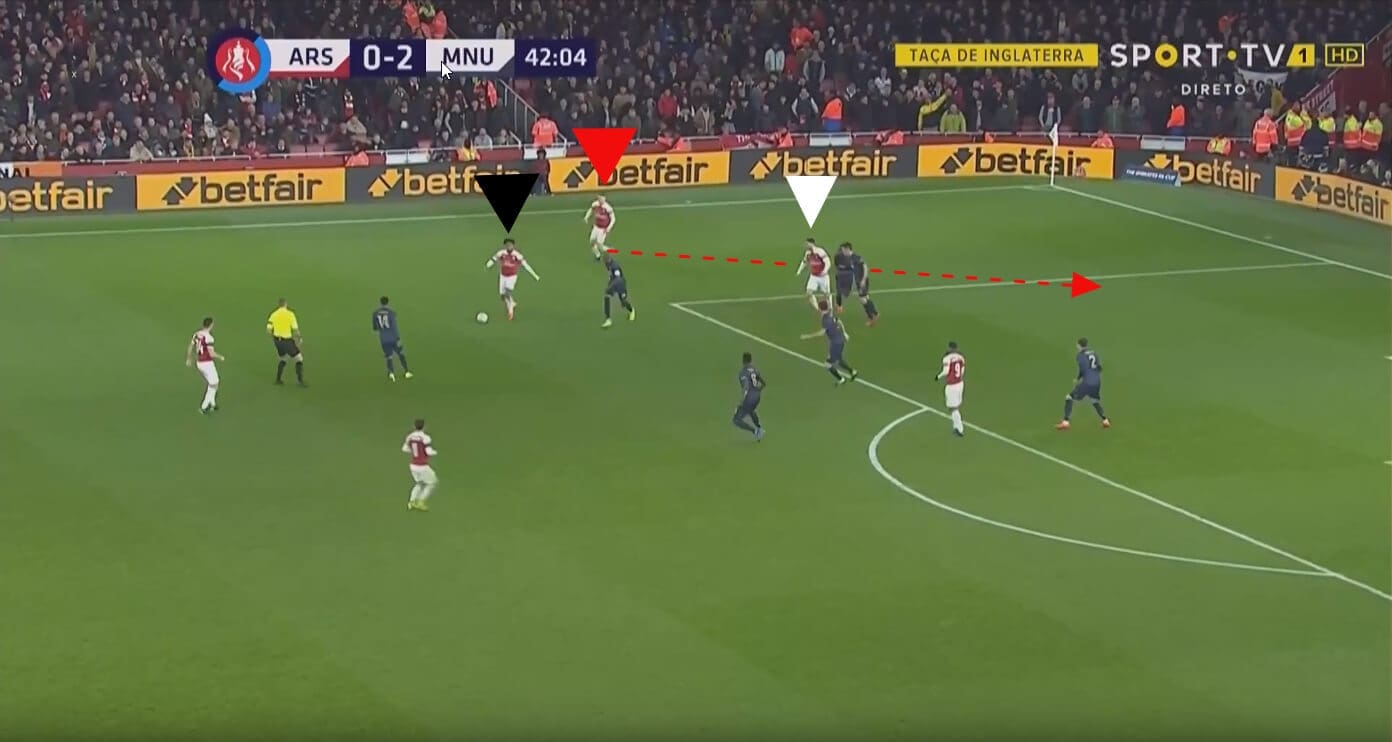
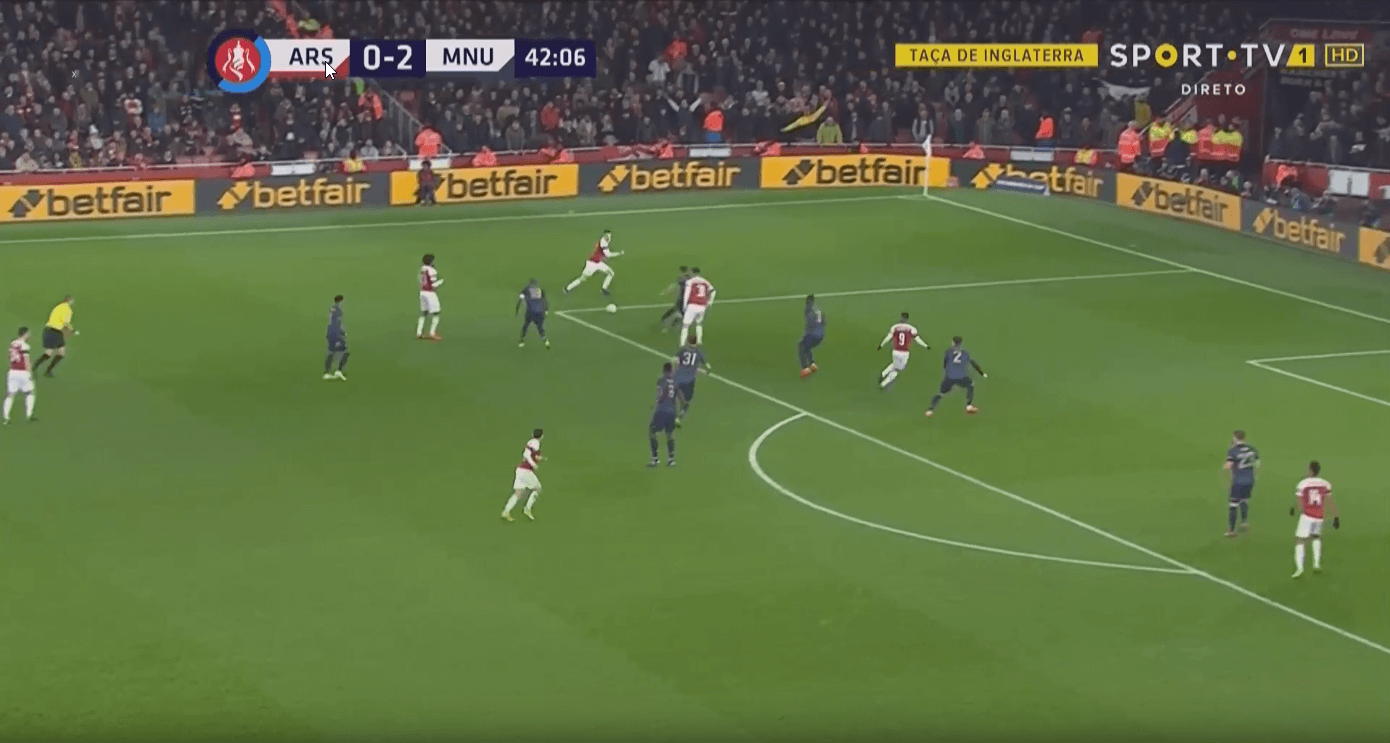
Kolasinac is in the space between Young and Bailly, while Iwobi is marked by Herrera. This leaves Ramsey free to make the run in behind United’s back line. Iwobi slides the ball into the half-space, where Ramsey dribbles it in before cutting it back across the six-yard box for Aubameyang to eventually tap in.
This goal was created by Arsenal overloading the left side, and Ramsey’s intelligent movement to get in behind the line. However, this was not something they were able to do frequently, leaving them vulnerable to the counter-attack as the match went on.
Unlike Jose Mourinho, Ole Gunnar Solskjaer had more faith in his defenders. This meant that Manchester United’s three forwards stayed higher up the pitch instead of tracking back into the defensive third. Recovering the ball 20-30 yards up the pitch allowed them to be more dangerous on the counter-attack.
With Jesse Lingard at the tip of the diamond, Alexis Sanchez and Romelu Lukaku played as the strikers. United found success when Lukaku moved wide into the space behind Kolasinac on the counter attack, allowing the Red Devils to get the ball forward to the Belgian striker.
Lukaku shows his worth
The former Chelsea player has played this role before in Belgium’s victory over Brazil at the 2018 FIFA World Cup. Defensively, the forwards would stay up the pitch, and immediately drift into the wide areas behind the opposition’s attacking full-backs. In this game, we saw Lukaku do this repeatedly, leading to Manchester United’s first two goals.
In the image below, we see a lightning-quick counter-attack from Manchester United as their forwards look to close down obvious passing lanes, but they aren’t retreating deep into their own half. You can see that Lukaku is already behind Kolasinac, and when Shaw recovers the ball and starts driving into space for the counter-attack, the Belgian is working to get forward into this space.
Laurent Koscielny makes an obvious defensive error, trying to step up and play Lukaku offside with no one placing pressure on Shaw. The English left-back is able to deliver an easy through-ball to create a three-on-two advantage. Lukaku can then cut the ball back to Lingard, who has stopped in ample space while the defenders stayed with Sanchez’ run to the far post.
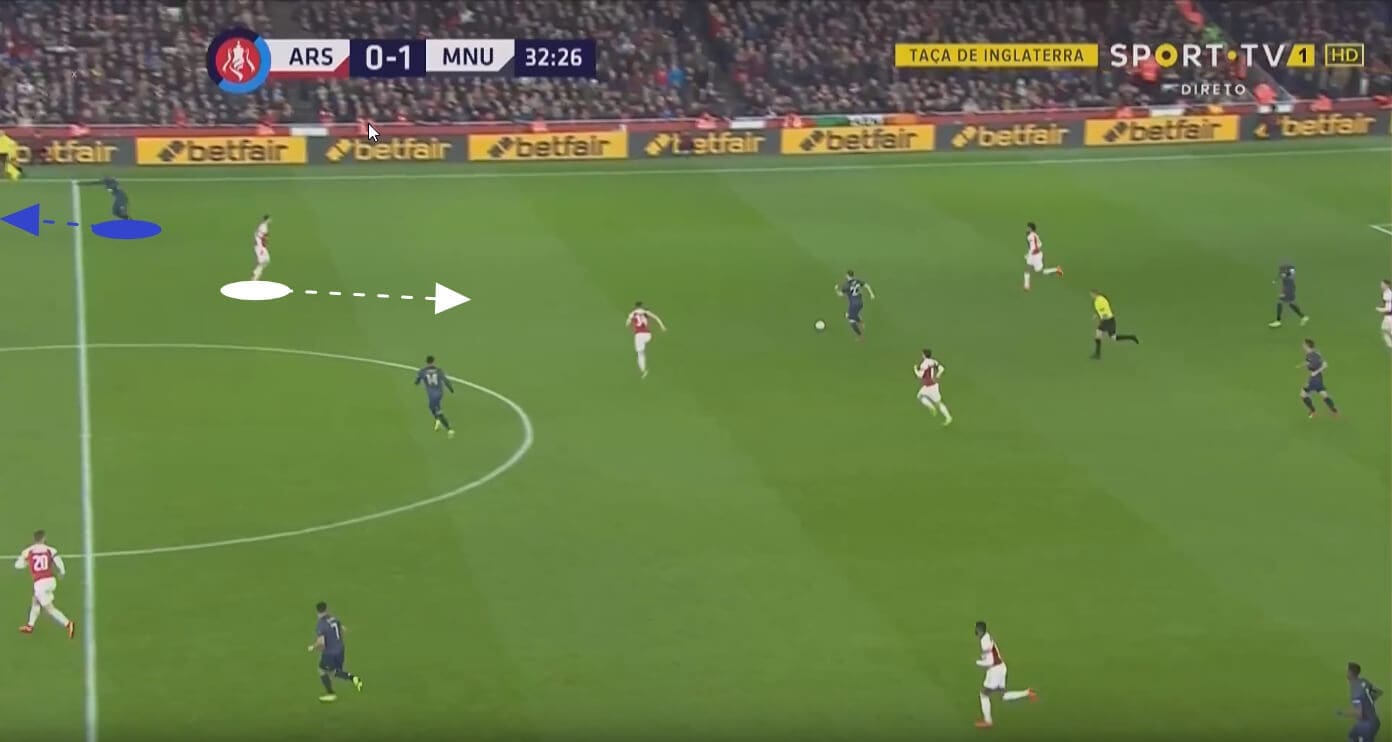
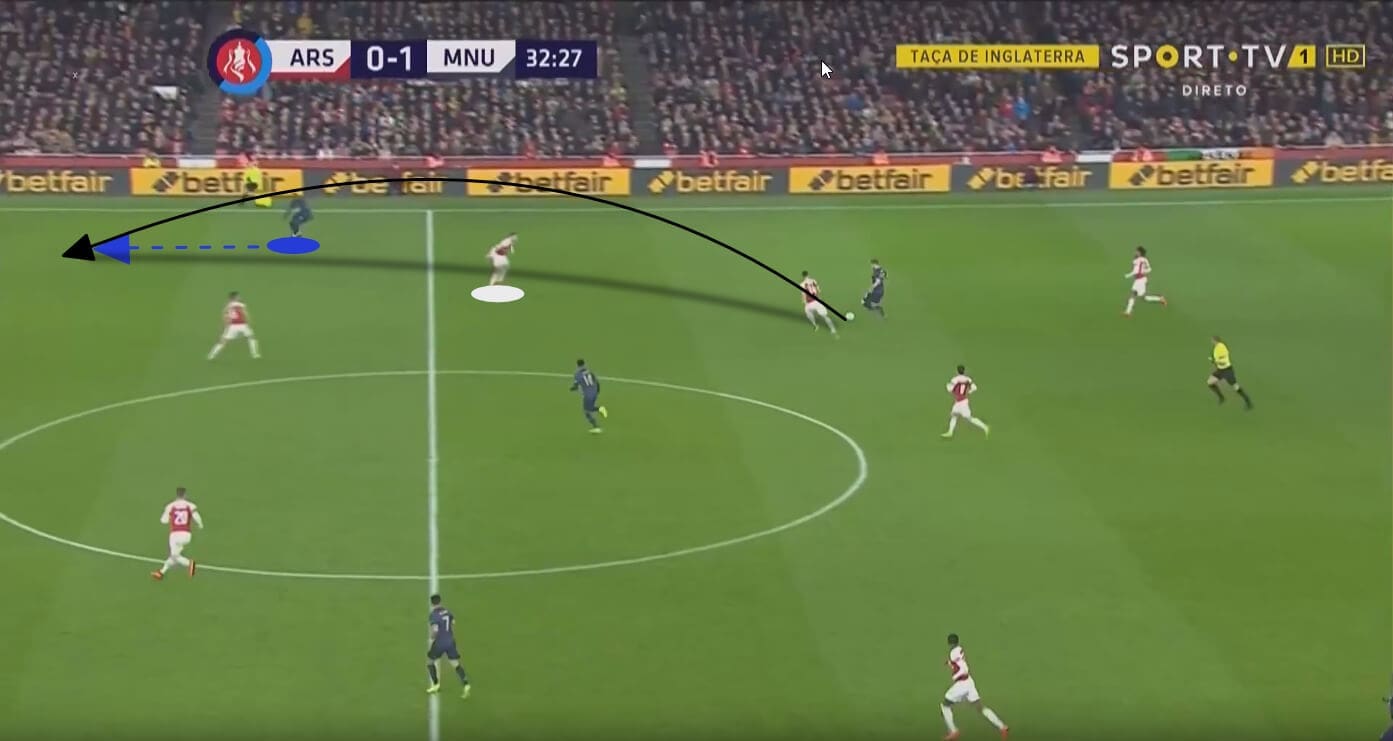
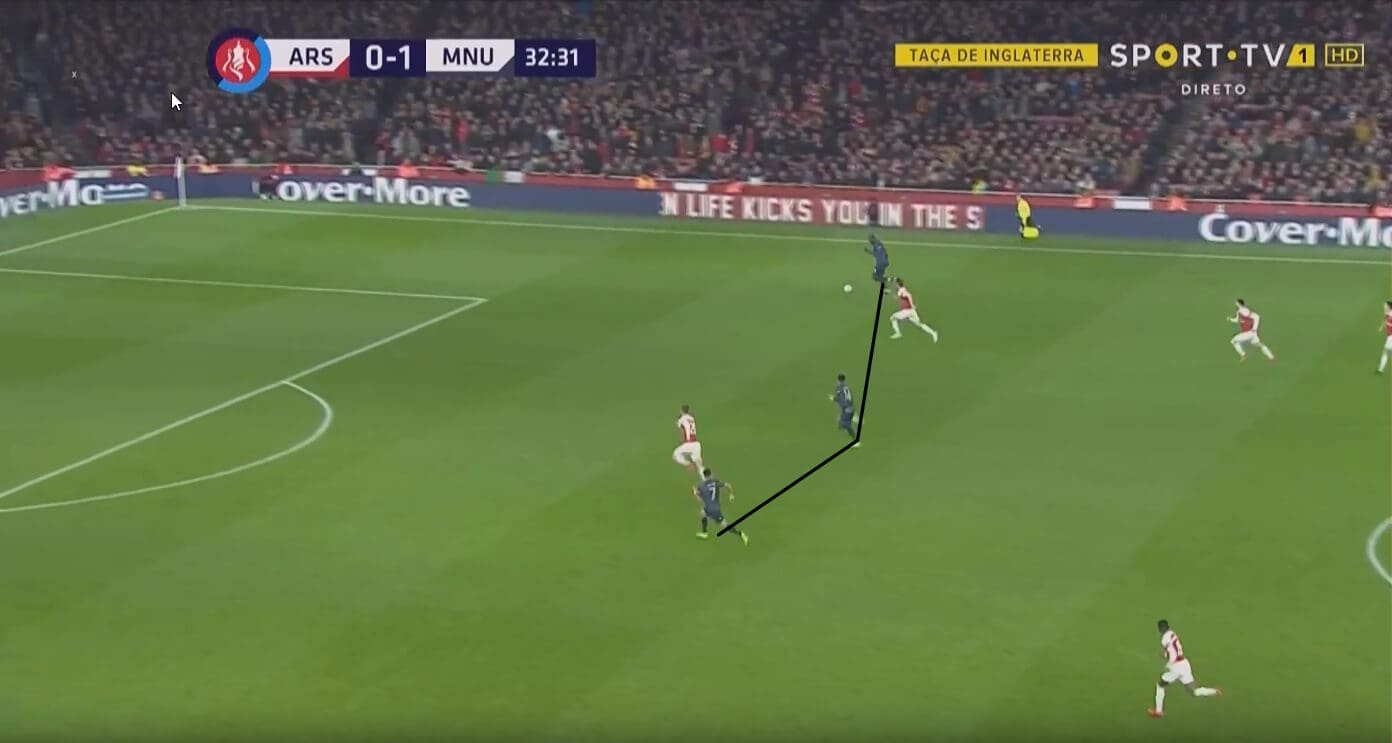
This movement works to Romelu Lukaku’s advantage, which didn’t happen often under Mourinho. Under the Portuguese manager, Lukaku often played alone against two centre-backs with his back to goal, trying to hold the ball up until his supporting wingers or midfielders could get up the pitch.
The Belgian is a large physical player, but playing with his back to goal is not his strongest attribute. He does his best work when he can receive the ball then turn to use his speed and power to drive forward at defenders. He got two assists in this match from just this kind of play.
To help spur the quick counter-attacks, Paul Pogba would often use his dribbling ability to drive the ball forward through a lightweight Arsenal midfield that struggled to deal with his size and technical ability. Another key contribution from the former Juventus man was his ability to get into the box. With both Sanchez and Lukaku moving into wide areas, others needed to provide a target in the penalty area. Pogba has been doing this repeatedly under the new manager, and it wasn’t unusual to see him as the most advanced central player.
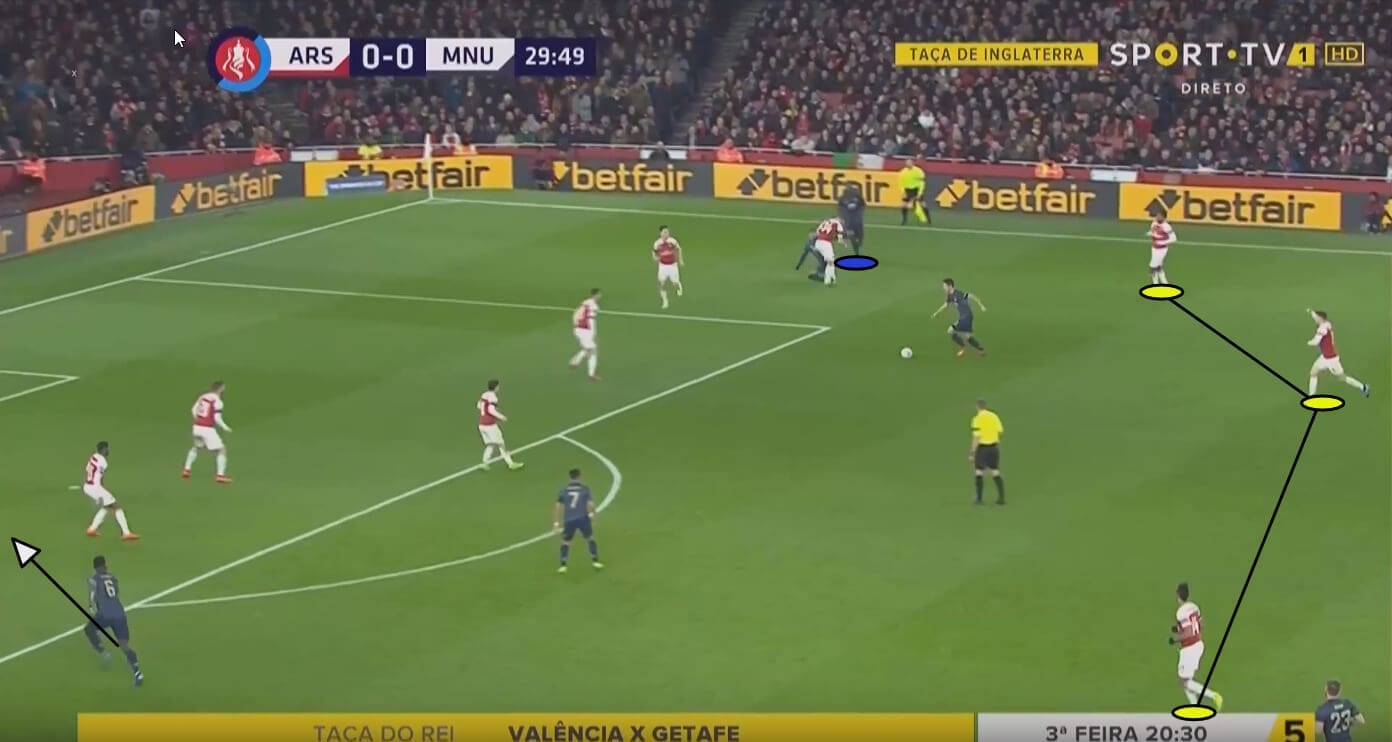
Injuries leave Arsenal struggling as they try to recover
In the 21st minute, Arsenal lost Sokratis to injury and brought on Shkodran Mustafi to replace him. With Koscielny and Mustafi at centre-back, Arsenal struggled to deal with United’s speed. They lacked the pace to track the Red Devils’ strikers as they drifted wide on the counter-attack.
This was only made worse in the 64th minute as Laurent Koscielny went down with a facial injury. With no other defenders on the bench, Emery made two substitutions. Nineteen-year-old Matteo Guendouzi came on for the injured Koscielny, settling into midfield while Granit Xhaka moved into the backline as a makeshift centre-back. The other change was Mesut Ozil coming on for Alex Iwobi. Ozil went out to the right wing, and Aubameyang switched over to the left wing.
As Arsenal chased the game, trying to at least force a replay, Ole Gunnar Solskjaer replaced Alexis Sanchez and Romelu Lukaku with Marcus Rashford and Anthony Martial in the 72nd minute. These were very positive substitutions that have become rare for the Red Devils over the years. Rather than sitting on his one goal lead, he put in the players to try and kill the tie off, and it worked. Martial scored United’s third goal in the 82nd minute, meaning that they could then see out the game comfortably.
Conclusion
The second big test for Manchester United under Solskjaer went even better than the first one against Tottenham. The Red Devils were able to defend well, allowing Arsenal to have the lion’s share of possession without giving up many clear chances. This also allowed them to counter-attack quickly. The highlights of these three United goals wouldn’t have looked out of place in a film reel featuring some of United’s best counter-attacks under Sir Alex Ferguson.
Another big change was United putting their foot on the Gunners throat in the second half when they were leading 2-1. They looked for the third goal to put the game out of sight, rather then retreat into a shell and hope to see out the match. The ambition was rewarded as Anthony Martial scored in the final 10 minutes, allowing Manchester United to dispense with the Gunners 3-1.
If you love tactical analysis, then you’ll love the digital magazines from totalfootballanalysis.com – a guaranteed 100+ pages of pure tactical analysis covering topics from the Premier League, Serie A, La Liga, Bundesliga and many, many more. Buy your copy of the January issue for just ₤4.99 here, or even better sign up for a ₤50 annual membership (12 monthly issues plus the annual review) right here.

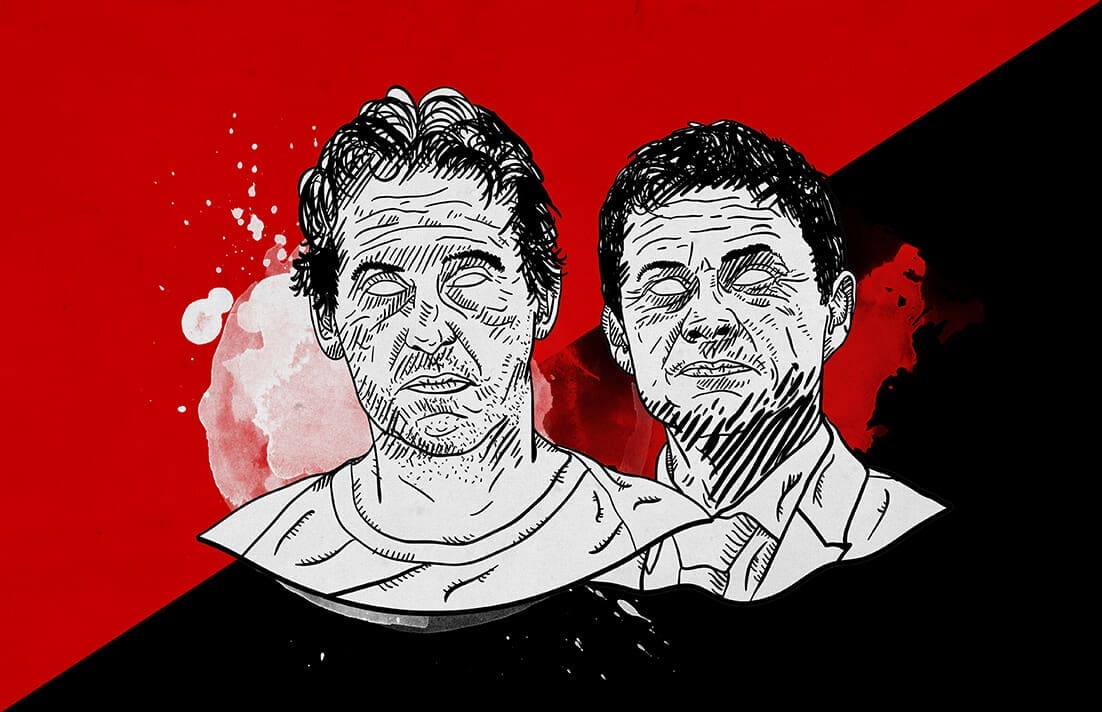



Comments